You’ve upgraded your mattress, installed blackout curtains, and stopped using your phone at night—yet you still wake up tired? Your bedroom layout might be to blame.
Feng Shui, the ancient Chinese system of spatial flow, offers practical ways to improve your sleep by adjusting how your room supports rest. And many of its ideas match what environmental psychology already tells us: where you sleep matters.
Here are six layout mistakes that might be quietly disrupting your sleep—and how to fix them.
🚪1. Bed Facing the Door (The “Coffin Position”)
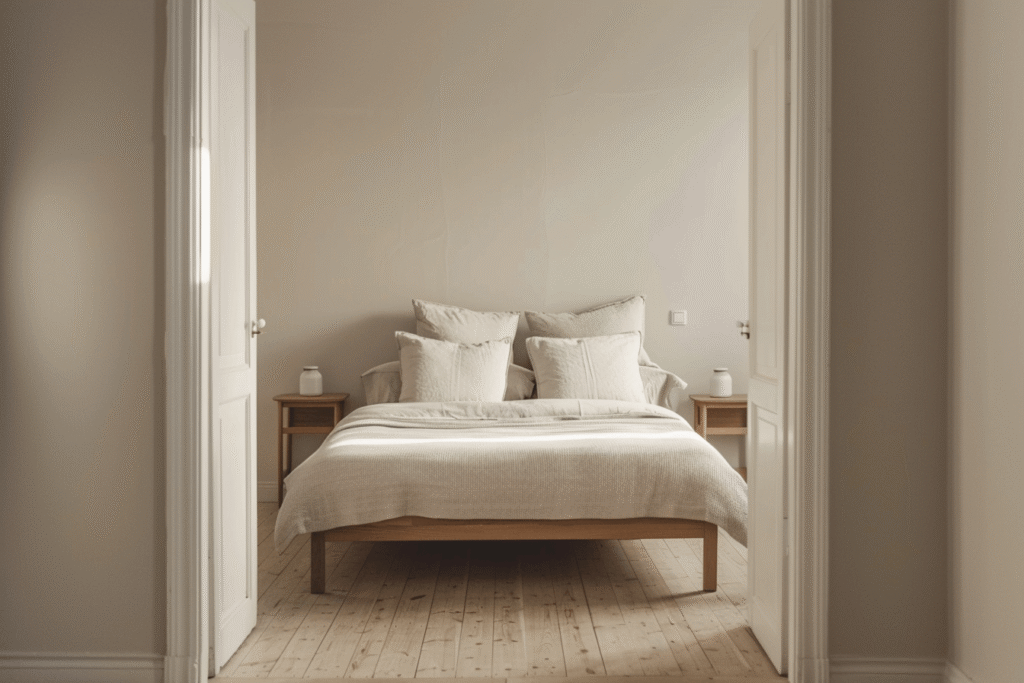
Let’s say your bed is placed directly in line with the bedroom door—your feet or head point right toward the opening. In Feng Shui, this setup is known as the “coffin position,” and it’s considered one of the most disruptive layouts for rest.
Why? Because the door is where energy (or “qi”) enters and leaves a room. If you’re sleeping in that pathway, it’s like trying to relax in a hallway—you’re constantly exposed to movement, stimulation, and disturbance. According to Feng Shui, this rush of energy can lead to anxiety, disrupted sleep, and even chronic fatigue over time.
Even outside of Feng Shui, there’s science behind this discomfort. Environmental psychologists have found that when we sleep in direct line of a doorway, our brains stay slightly more alert. It’s a built-in survival mechanism: our body wants to monitor what might be coming through that open space.
What to do:
- Reposition the bed: Angle or shift the bed so your head is not directly in line with the door. Ideally, your headboard should be placed against a solid wall for added support.
- Add a visual buffer: Use a low cabinet, curtain, or decorative screen between the door and the bed to slow the energy flow.
- Install a door curtain: A light door drape can reduce direct airflow and enhance a sense of privacy and protection.
🪞2. Mirrors Facing the Bed

In traditional Feng Shui, mirrors are considered to have “yin” properties. They reflect not only images but also energy, and when placed directly across from the bed—especially near the head or foot—they can disrupt the calm, protective atmosphere a bedroom needs.
At night, when the body is most vulnerable and the mind is drifting toward sleep, reflections—especially sudden or shadowy ones—can trigger subconscious tension. This may lead to restlessness or disturbed sleep. Sleep studies have also shown that visual stimuli, like reflections, can contribute to fragmented sleep and nighttime anxiety.
What to do:
- Relocate mirrors: Avoid placing any mirror directly across from or next to the bed—especially at the head or foot.
- Use soft barriers: If the mirror is part of a built-in wardrobe or cannot be removed, consider covering it at night with a curtain, folding panel, or light cloth.
💡3. Beams or Heavy Fixtures Above the Bed
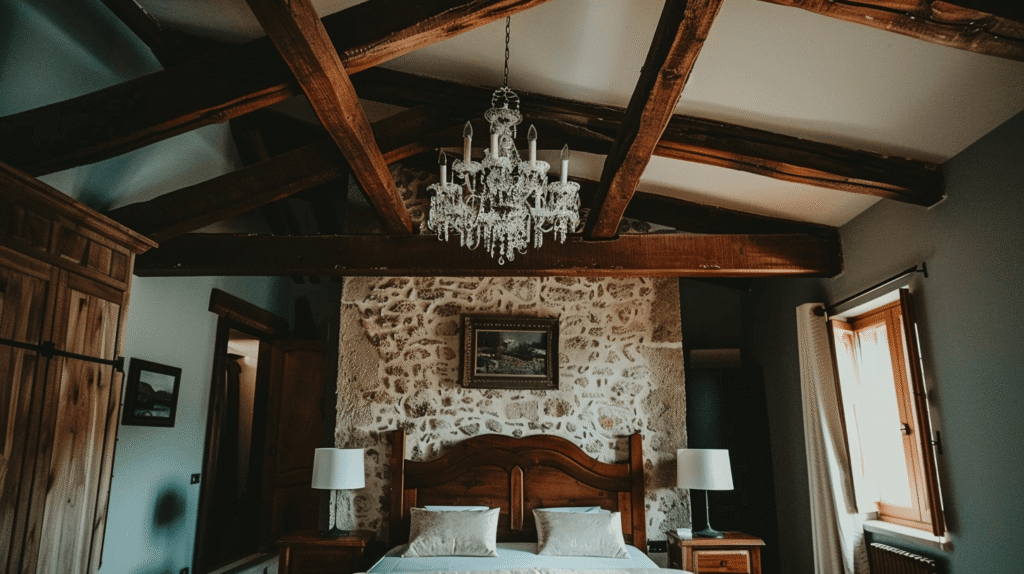
In traditional Feng Shui, beams or heavy chandeliers positioned directly above the bed are considered a form of “压迫煞” (oppressive sha), especially when they hover over the head or chest area. This configuration symbolizes pressure and suppression, potentially leading to feelings of mental fatigue, blocked energy, and even physical symptoms like headaches or restless sleep.
Modern psychology also supports this notion. Overhead weight—whether visible or perceived—can trigger subconscious stress responses. Our primitive brain reads these vertical threats as danger, increasing anxiety and preventing the full relaxation needed for deep sleep. In regions prone to earthquakes, heavy chandeliers add a layer of real physical risk.
What to do:
- Conceal the beam: Install false ceilings, light fabric drapes, or soft decorative panels to visually minimize or hide the beam.
- Move the bed: If possible, reposition the bed so it’s not directly under the beam, or consider placing it at an angle.
- Simplify lighting: Swap heavy chandeliers for flush-mount ceiling lights or integrated LED lighting to reduce the sense of weight above.
🪑4. Sharp Corners in the Bedroom
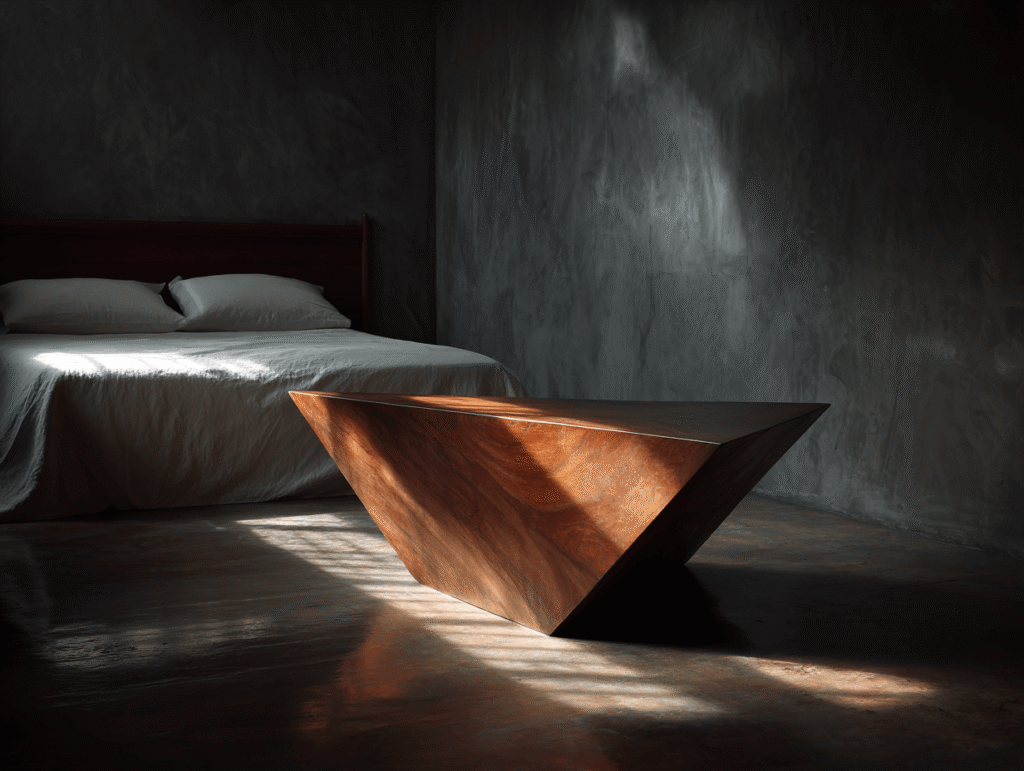
From a Feng Shui perspective, sharp corners—like those on triangular furniture, bed frames, or pointed edges—are seen as sources of “火形煞” (aggressive or piercing energy). These elements may contribute to tension, arguments, or emotional friction in a space that’s meant for calm and intimacy.
Modern psychology supports this idea. Sharp edges can create a subconscious sense of threat or discomfort, keeping the brain on high alert and making it harder for the body to fully relax—especially in a place meant for deep rest like the bedroom.
What to do:
- Choose rounded furniture: Opt for beds, nightstands, and dressers with soft corners or protective edge covers.
- Soften the room: Add leafy green plants like monstera or peace lilies to visually balance hard edges and bring in grounding, organic energy.
🧺5. Clutter in the Bedroom (Not Just Under the Bed)
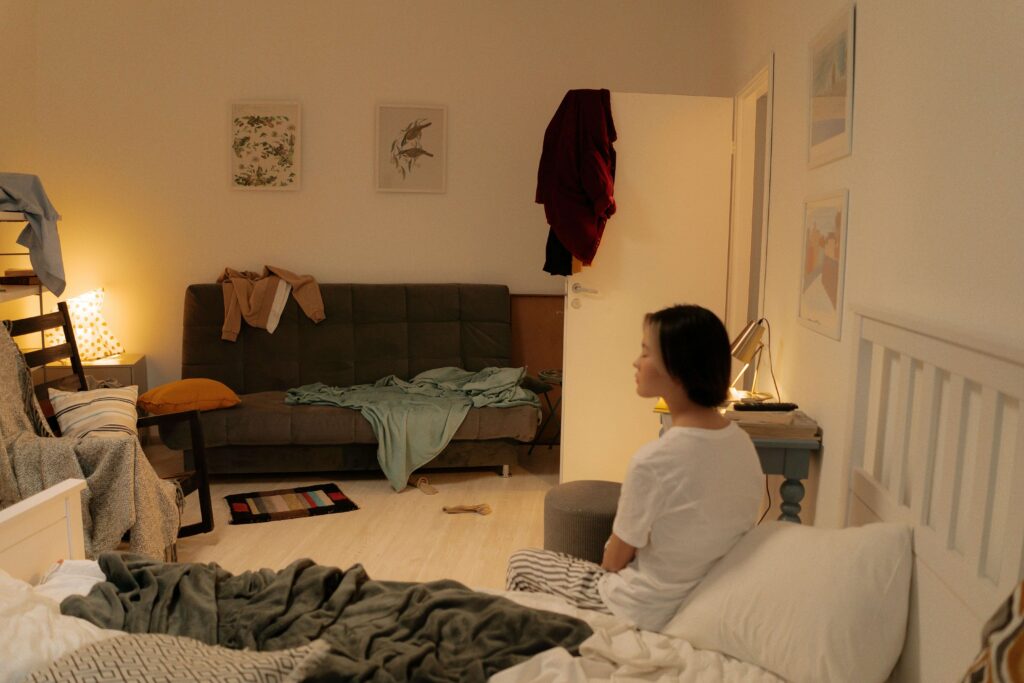
In Feng Shui, clutter is more than just a visual nuisance—it’s a form of stagnant energy. When items pile up under your bed or accumulate in corners, shelves, or on top of dressers, they block the natural circulation of qi (energy), leading to feelings of heaviness, mental fog, and low vitality. The bedroom, as a restorative space, is especially sensitive to these disruptions.
Modern psychology and health research echo these insights. Studies show that visible mess creates cognitive overload, making it harder for the brain to relax and transition into sleep. On a practical level, clutter—especially under the bed—can harbor dust, mold, and allergens, which negatively impact air quality and overall well-being.
What to do:
- Clear under the bed: Ideally, keep this space empty. If storage is needed, use clean, soft containers and avoid sharp or emotionally charged items.
- Minimize surface clutter: Keep bedside tables, dressers, and corners tidy. Avoid leaving piles of clothes, books, or electronics visible overnight.
🚽6. Bathroom Doors Facing the Bed or Headboard
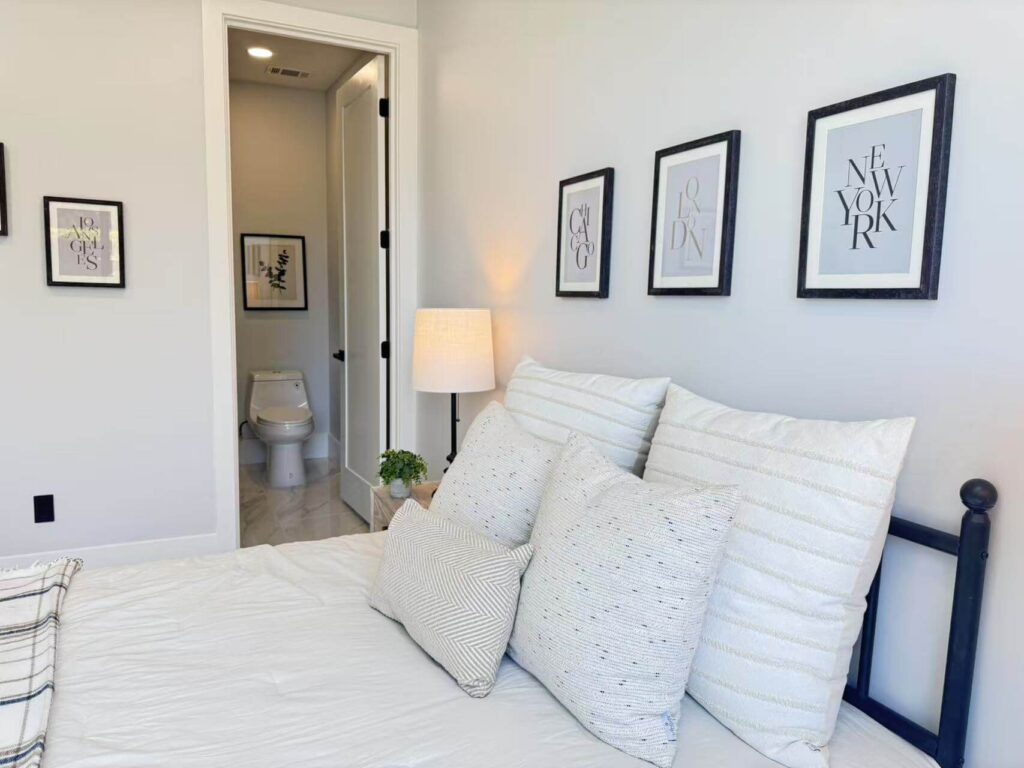
In Feng Shui, it’s not just having a bathroom nearby that matters—but how it relates to your bed. When the bathroom door faces the bed, especially the head, it’s believed to send draining “yin” energy—linked to moisture, waste, and instability—directly toward you. Over time, this layout may reduce vitality and subtly disturb emotional balance by symbolically pulling energy away from the body during rest.From a scientific perspective, a bathroom behind or directly facing the bed can introduce unwanted stimuli: flushing sounds, humidity, odors, or even subconscious tension due to its proximity. These factors may disrupt deep sleep, especially for sensitive or light sleepers.
What to do:
- Close the bathroom door: Keep the door shut when not in use to prevent the flow of air, moisture, and sound.
- Improve ventilation: Install an exhaust fan or dehumidifier to reduce dampness and mold potential.
- Add physical separation: Use sliding doors, curtains, or frosted glass panels to visually distinguish the bathroom space.
- Use natural air purifiers: Add moisture-loving plants like pothos or bamboo, or use charcoal bags to absorb odors.
Good sleep isn’t just about what you do at night—it’s about where you sleep. By blending ancient Feng Shui insights with modern environmental psychology, we can create bedrooms that nourish rest, regulate emotions, and support long-term well-being.
Not sure if your space supports your sleep? Send a photo or floor plan—I’m happy to take a look.

